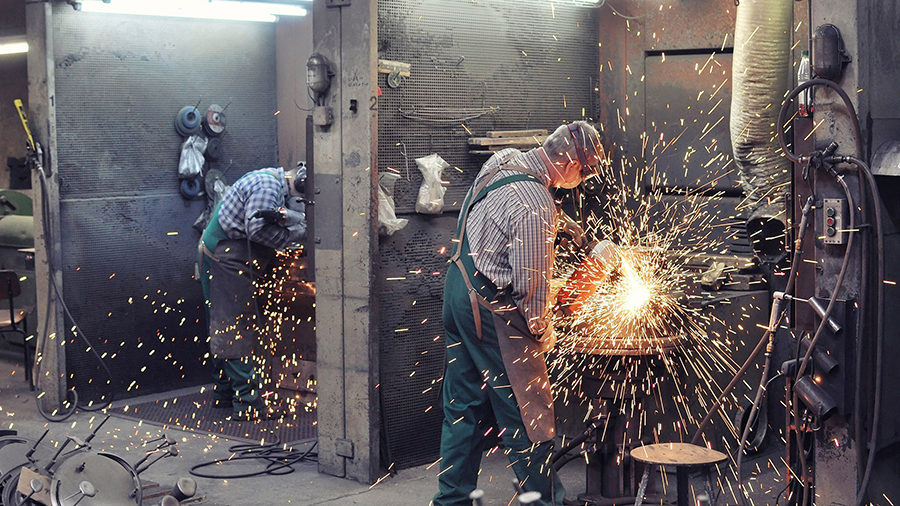Serving for hours the drill or the grinder is no picnic. For years, no major symptoms show up until sometime numbness, tingling or pain sets in. Nobody should take these symptoms lightly. For those who expose their hands and arms to permanent vibrations can seriously fall ill.
This is also confirmed by the trade association Wood and Metal in Mainz. Activities in the wood and metal sectors are among the most vulnerable, along with those in the construction, mining and forestry sectors. Men are affected more frequently than women. The IG Metall and the works councils from the affected sectors are increasingly investigating this so that preventive measures are taken at an early stage in the companies.

When grinding vibrations are transmitted to hand and arm. Anyone who does this often and for many years can get sick. (Photo: iStock.com/industryview)
Flex, impact wrench, grinder and many more
The list of tools that can cause hand-arm vibration is extensive: impact hammers, needle-punchers, riveting tools, impact drills, impact wrenches and grinders of all kinds. These machines transmit vibrations to the arms and hands during use. Locksmiths, riveters and grinders as well as employees who are deburring in a foundry or working intensively with eccentric grinders are particularly at risk.
The question arises as to what employees should do to carry out onerous tasks. Experts estimate that between one and two million employees across all industries are potentially at risk. That does not mean that they necessarily get sick. The vibrations must be permanent and very high until work-related health problems occur. It is partly due to a few years of latency.
Diseases due to vibrations are underestimated
Vibrations are underestimated in their dimensions. Anyone who suffers pain and sees changes in the arms and hands should, if available, go to the company doctor or safety specialist in the company and describe the symptoms. Employers are required by law to carry out a risk assessment at the workplace. In doing so, company doctors or occupational safety specialists determine whether the applicable triggering and exposure limits have been adhered to and whether there is a risk of disease.
Where companies hesitantly approach risk assessments, works councils should demand them all the more offensively, because education about health hazards is urgently required. In the enterprise a lot of simple preventive measures can be taken. The machines must be serviced regularly. Too old machines are to be weeded out. Choosing the right ergonomic tool is also crucial. A better work organization with breaks and job rotation can help that the individual employee is not so heavily burdened.
Circulatory disorders in the hands
Vibrations cause circulatory disorders in the hands. At first only the crests or single fingers tingle. With permanent load, the fingers can become white to the finger root (so-called white finger disease). When the blood flows back into the finger, the fingers turn red and often begin to hurt. Attacks increase as the ambient temperature gets cooler. Many affected workers then complain of pain in the hands and arms and reduced muscle strength. In the final stage, complete loss of sensation may occur. Those affected are then forced to refrain from doing the same, if only because the loss of manual mobility increases the risk of accidents.
Over one million people potentially at risk
Since 2015, the so-called carpal tunnel (CTS) is recognized as an occupational disease. A nerve in the carpal tunnel, which lies in the middle of the hand, is damaged, which among other things controls the movements of the fingers and thumb. The cause of this disease is an overuse by flexion and extension of the wrists, by increased effort of the hands or hand-arm vibrations. The professional associations expect in the next few years with an increase in suspicious activity on carpal tunnel, as this disease can only be recognized as a listed occupational disease for a year.
Gloves alone do not protect
Special gloves are offered on the market to protect against vibrations. However, these gloves only work with high-frequency vibrations. Such gloves are additional protection, for example, when working on grinding machines in the high-speed range over 9000 revolutions per minute. But they are not enough on their own. On the contrary, an effective protective measure is to reduce the duration of exposure, that is, to stop carrying out the stressful activities for as long as possible, so that no damage to health occurs.
